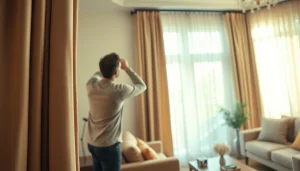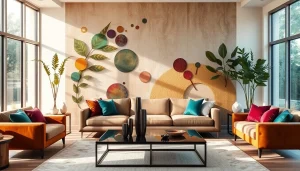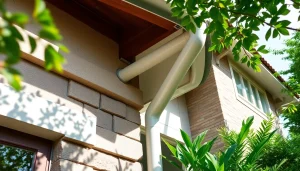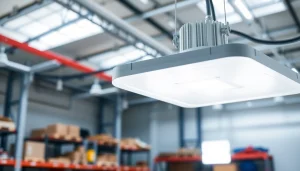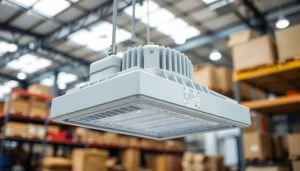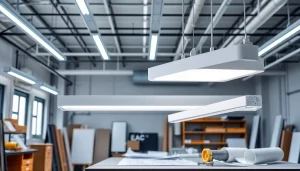Enhance Your Space with Sliding Partition Walls: Versatile Solutions for Modern Living
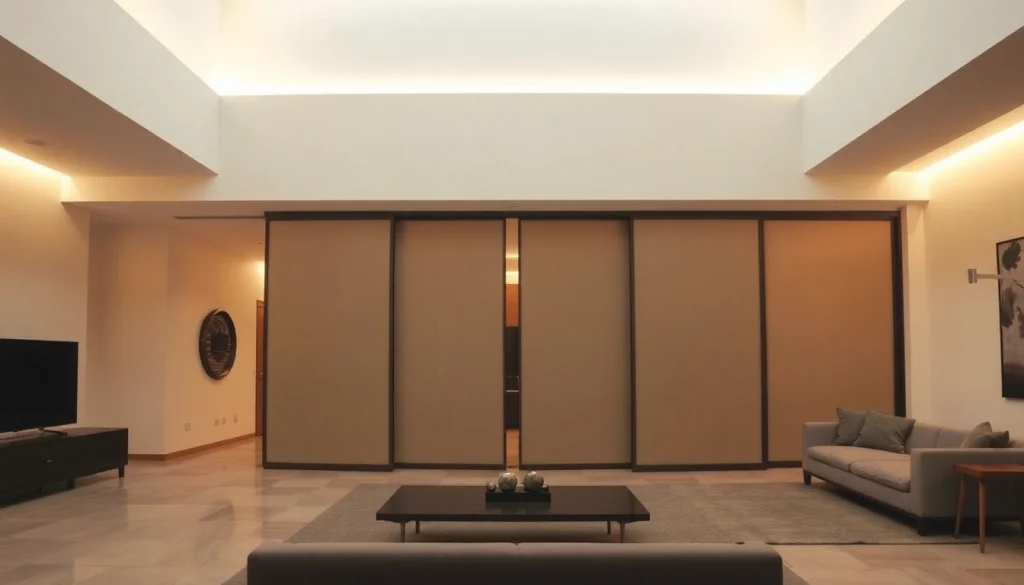
Understanding Sliding Partition Walls
What is a Sliding Partition Wall?
A sliding partition wall is a versatile and innovative solution designed to divide spaces within residential or commercial environments without requiring extensive construction or major renovations. Unlike traditional walls, which are fixed and permanent, sliding partition walls are movable and can be configured based on the needs of users. They typically consist of panels that glide along a track, enabling seamless transitions from open to closed spaces.
These partitions can be made from various materials, such as wood, glass, or fabric, allowing for a customizable look that can fit any aesthetic preference. Sliding partition walls serve multiple functions, from enhancing privacy to creating separate environments for different activities, making them popular in offices, homes, and educational institutions alike.
Applications for Sliding Partition Walls
The applications of sliding partition walls are vast, and they can be utilized across various settings:
- Residential Settings: Homeowners can use them to create open-concept living areas that can be transformed into smaller, private spaces for work, study, or relaxation.
- Commercial Spaces: Offices often employ sliding partition walls to create flexible meeting rooms or collaborative workspaces, allowing for quick changes when team sizes fluctuate.
- Educational Institutions: Classrooms can benefit from sliding partitions to accommodate different teaching models, fostering collaboration among students or allowing for quieter study areas.
- Hospitality Venues: Restaurants and hotels use sliding partitions to optimize their space for varying group sizes, providing an intimate setting for smaller gatherings while also accommodating larger events.
Key Benefits of Using Sliding Partition Walls
Utilizing sliding partition walls comes with numerous benefits, with versatility being paramount. Here are some key advantages:
- Space Optimization: These partitions can maximize the use of available space, adjusting room sizes according to current needs.
- Flexibility: Users can reconfigure layouts quickly and easily, promoting productivity and efficiency in dynamic environments.
- Cost-Effectiveness: Compared to building permanent walls, installing sliding partitions is usually less expensive and requires minimal labor.
- Aesthetic Appeal: With a range of styles, finishes, and materials available, sliding partitions can enhance the visual appeal of any environment.
- Improved Acoustics: Many sliding partition wall systems are designed to minimize sound transmission, making them ideal for environments where privacy is a concern.
Types of Sliding Partition Walls
Wall-Mounted vs. Track-Mounted Systems
When deciding on a sliding partition wall, it is essential to understand the differences between wall-mounted and track-mounted systems:
- Wall-Mounted Systems: These systems attach directly to the wall and have panels that slide along a specific track mounted on the wall. They are often more straightforward to install and maintain, making them ideal for spaces that cannot support floor-mounted tracks.
- Track-Mounted Systems: These utilize an overhead track suspended from the ceiling, allowing panels to glide smoothly and independently. They often offer greater flexibility in terms of how spaces can be divided since they do not require support from the ground.
Materials and Finishes for Sliding Partition Walls
Sliding partition walls can be crafted from various materials, each contributing different benefits depending on the specific needs of the users:
- Glass Panels: Ideal for modern aesthetics, glass sliding partitions allow light to flow while maintaining an open feel yet provide the option for privacy when needed.
- Wood Panels: Offering warmth and timeless elegance, wooden partitions can be customized with unique finishes, making them suitable for residential and upscale commercial environments.
- Fabric Panels: These panels can add a touch of softness to a space, helping to absorb sound and improve acoustics in busy environments.
- Composite Materials: Often lightweight and durable, composite panels may be used where ease of handling and installation is essential.
Choosing the Right Style for Your Space
Selecting the appropriate style of sliding partition wall depends on various factors such as decor, functionality, and spatial requirements:
- Contemporary Styles: Smooth, minimalist designs work well in modern settings, often incorporating glass and bold lines.
- Traditional Designs: Opt for classic wooden partitions with intricate details to add character to the space.
- Custom Solutions: Many manufacturers offer tailor-made options that can be designed specifically to meet spatial and aesthetic needs.
Installation and Maintenance Tips
Step-by-Step Installation Guide
Installing sliding partition walls can be a straightforward process if you follow these steps:
- Measure the Space: Carefully measure the area where the partition will be installed to ensure a perfect fit.
- Select & Purchase the Panels: Choose your desired materials and finishes based on your design preferences and functional requirements.
- Prepare the Installation Area: Clean and organize the installation area, removing any obstacles that could hinder the process.
- Install the Track/Wall Mount: Follow the manufacturer’s instructions to securely attach the track or wall mount to the chosen location.
- Hang the Sliding Panels: Once the track is in place, carefully hang the panels, ensuring they glide smoothly.
- Test Functionality: Open and close the partition several times to confirm proper installation; make adjustments as necessary.
Common Maintenance Practices
To keep sliding partition walls functioning well for years, it’s important to establish a maintenance routine:
- Regular Cleaning: Dust and dirt can accumulate on tracks and panels. Regularly wipe them down to maintain aesthetic appeal and functionality.
- Periodic Inspections: Check for wear on the track and ensure that all hardware is secure. Tighten screws and fittings if necessary.
- Lubrication: Utilize appropriate lubricants on the track and any moving parts to ensure smooth operation.
When to Seek Professional Help
While many homeowners can manage the installation and maintenance of sliding partition walls, some situations may require professional assistance, such as:
- Complex installations that involve customization beyond standard solutions.
- Adjustments that require construction know-how, such as modifications to electrical or plumbing systems.
- Extensive damage requiring repairs that go beyond basic cleaning and lubrication.
Cost Considerations for Sliding Partition Walls
Budgeting for Your Project
Before deciding on a sliding partition wall, creating a budget is essential. Costs can vary significantly based on several factors, including the materials chosen, size of the area to be divided, and installation complexities. A basic breakdown may include:
- Materials Costs: Depending on the type of panels selected (wood, glass, fabric, etc.), prices can range from $20 to $100 per square foot or more.
- Installation Costs: Professional installation can add another $300 to $1,000 to the overall project cost, depending on the labor rate and complexity of the installation.
- Additional Features: Considerations such as integrated technology features or custom designs can further increase costs.
Cost-Effective Alternatives
If the budget is a concern, there are alternatives to traditional sliding partition walls that can still deliver flexibility and functionality:
- DIY Solutions: Many homeowners choose to create their own sliding partitions using basic materials, which can significantly lower overall costs.
- Less Expensive Materials: Employing lower-cost materials like MDF (Medium Density Fiberboard) for panels can keep the project budget-friendly.
- Second-Hand Options: Searching for used sliding partition systems or panels can also help save money.
Value vs. Investment in Sliding Partition Solutions
Investing in sliding partition walls can yield significant long-term benefits. They provide versatility, function, and aesthetic appeal, enhancing the overall value of your space. In commercial settings, temporarily divisible spaces can lead to higher productivity and better use of assets, while homeowners can use these partitions to create fluid living environments that adapt to their lifestyle.
Inspiring Ideas for Your Sliding Partition Wall
Creative Room Configurations
When it comes to designing your space with sliding partition walls, creativity is key. Here are some innovative configurations to consider:
- Multi-Functional Living Areas: Use sliding walls to convert a single large living room into separate zones, such as an entertainment area and a quiet reading nook.
- Dynamic Office Layouts: If you work from home, create a dedicated workspace that can be easily closed off from the rest of your home when meetings occur, promoting professionalism.
- Flexible Commercial Arrangements: In restaurants, use partitions to adjust dining spaces based on customer flow, providing intimate seating for couples while accommodating larger groups during busy periods.
Incorporating Technology with Sliding Partitions
Technological advancements can significantly enhance the functionality of sliding partitions. Here are a few ideas:
- Smart Integration: Install smart glass panels that can change opacity at the touch of a button, offering instant privacy while providing transparent views when needed.
- Soundproofing Technology: Incorporate sound-absorbing materials to ensure partitions help maintain a serene environment, especially in busy or noisy settings.
- Interactive Features: Use digital screens embedded within the panels for displaying schedules, presentations, or art, transforming a boring wall into a dynamic feature.
Interior Design Trends Featuring Sliding Walls
Sliding partition walls aren’t just functional; they are also on-trend. Here are some current interior design trends that feature these innovative solutions:
- Minimalism: The trend toward minimalistic design is being embraced in sliding partitions, with simple, sleek lines and neutral colors that complement open spaces.
- Biophilic Design: Incorporating natural materials and greenery within sliding wall designs can enhance the connection with nature while adding warmth to interiors.
- Industrial Aesthetic: In many modern spaces, sliding walls are crafted using metal frames combined with glass or wood to create an appealing juxtaposition of materials.
